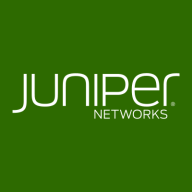

Fortinet FortiGate and Juniper Contrail SD-WAN compete in delivering comprehensive SD-WAN solutions. FortiGate has the edge in pricing and support, while Contrail SD-WAN excels in advanced features, emphasizing seamless integration and network optimization.
Features: Fortinet FortiGate offers robust security, seamless firewall integration, and support for various deployment scenarios. Juniper Contrail SD-WAN provides network abstraction, automated policy management, and superior network orchestration capabilities.
Room for Improvement: Fortinet FortiGate could enhance its advanced feature set, particularly in network optimization and integration. Documentation could also be further streamlined for newcomers. Juniper Contrail SD-WAN might focus on easing its deployment complexities and increasing the cost-effectiveness of its comprehensive features. Enhancements in customer support documentation could also be beneficial.
Ease of Deployment and Customer Service: Fortinet FortiGate provides a straightforward deployment model with extensive documentation and responsive support, making it ideal for quick setups. Juniper Contrail SD-WAN, while offering detailed guidance, has a more complex deployment process but supports detailed network management complexities.
Pricing and ROI: Fortinet FortiGate offers competitive setup costs with an emphasis on cost-effective licensing and scalability, ensuring quicker ROI for budget-conscious buyers. Juniper Contrail SD-WAN, though higher in upfront cost, boasts a comprehensive feature set that can lead to greater long-term savings for those invested in long-term operational gains.
Clients are now comfortable and not wasting productive hours on IT support.
The automation part is giving us a cost benefit and speed; we can react faster.
It's a very useful tool to mitigate and protect your enterprise.
The quick resolution of issues with Fortinet FortiGate is due to the support of the company and the fact that the equipment is easy to work with.
I would rate the technical support for Fortinet FortiGate a ten out of ten.
As a solution provider, when I encounter problems, I connect directly with Fortinet support, and they provide solutions within a very short time.
They scale up really well from smaller models like the FortiGate 40 and 50 to bigger sites with the FortiGate 100 for more throughput - up to enterprise datacenters.
The variation comes in terms of the interfaces and throughputs, but from a security perspective, you get the same benefit, irrespective of whether you have an entry-level unit or an enterprise.
We determine sizing based on multiple factors: number of users, available links, traffic types, server count, services in use, and whether services will be published.
We're experiencing 99.999% availability consistently.
I would rate the stability of Fortinet FortiGate a ten out of ten.
Currently, we are experiencing a general outage of one of the main internet service providers of the Dominican Republic, and we have not been impacted in our operations because with SD-WAN, we have another internet service provider and we are working with the second WAN connection without any disruption.
When considering Sophos XG, which we also use, the logging and reporting functionality is notably more efficient.
These sessions should be around five to ten minutes long, allowing users and partners to quickly grasp the information without disrupting their daily tasks.
The solution should be able to implement machine learning and analytics of all the logs for threat detection and protection.
Last year, I renewed the support for three years, which can sometimes be expensive but depends on the security benefits and how it helps us.
It offers cost savings as it is generally cheaper than the competition.
It is about 20% cheaper.
These features help reduce our downtime, manage the ISPs, and deploy SLAs for all the website traffic.
The most valuable feature of FortiGate is FortiView which provides proactive monitoring.
We got a firewall and gave an SSL VPN to my client to connect to their servers, after which, such kind of activities involving ransomware attacks stopped.
| Product | Market Share (%) |
|---|---|
| Fortinet FortiGate | 13.9% |
| Juniper Contrail SD-WAN | 1.3% |
| Other | 84.8% |

| Company Size | Count |
|---|---|
| Small Business | 357 |
| Midsize Enterprise | 133 |
| Large Enterprise | 188 |
| Company Size | Count |
|---|---|
| Small Business | 7 |
| Large Enterprise | 1 |
Fortinet FortiGate is a versatile network security tool offering features like VPN, firewall, web filtering, intrusion prevention, and scalability. It is known for its performance and integration with other Fortinet products, making it a preferred choice for robust cybersecurity.
Fortinet FortiGate stands out as a comprehensive cybersecurity solution with strong performance and ease of configuration. It delivers unified threat management, integrating features such as dynamic routing, SD-WAN support, and centralized management. Despite its strengths, improvements in the web interface's stability, pricing structures, and reporting capabilities are needed. Users seek better integration with third-party tools and automation advancements to enhance the experience further. These enhancements, alongside improvements in bandwidth management and the reduction of licensing costs, are points of interest for users looking to capitalize on FortiGate's extensive capabilities.
What are Fortinet FortiGate's key features?Fortinet FortiGate is widely implemented across industries as a primary firewall system for securing internet gateways and safeguarding data centers. It supports businesses in achieving SD-WAN integration and enhances cybersecurity by providing essential features like antivirus, web filtering, and application control. Enterprises utilize FortiGate for securing remote connections and ensuring compliance with security standards, making it adaptable for different network sizes and industries.
Contrail SD-WAN delivers a simple, automated multicloud SD-WAN. It enables you to create an evolvable architecture to simplify growth, from secure routers to SD-WAN, SD-Branch, and beyond. It automates the WAN edge across Juniper virtual cloud endpoints and on-premises next-generation firewall or universal CPE platforms. And it provisions and enforces multilevel security policy at scale, across multiple clouds and enterprise sites with diverse topologies.
We monitor all Software Defined WAN (SD-WAN) Solutions reviews to prevent fraudulent reviews and keep review quality high. We do not post reviews by company employees or direct competitors. We validate each review for authenticity via cross-reference with LinkedIn, and personal follow-up with the reviewer when necessary.